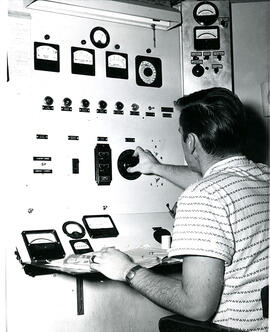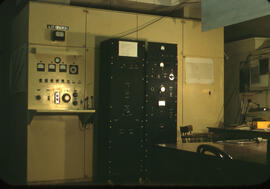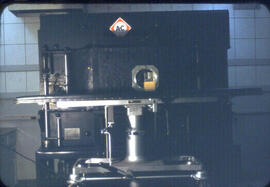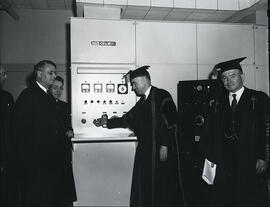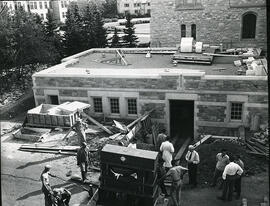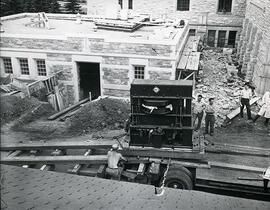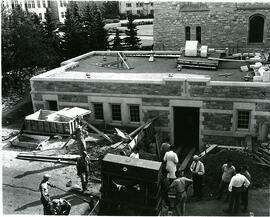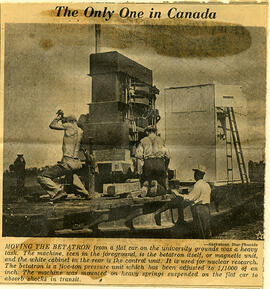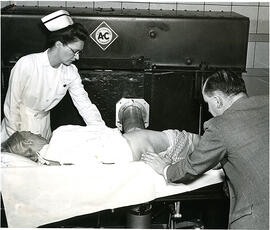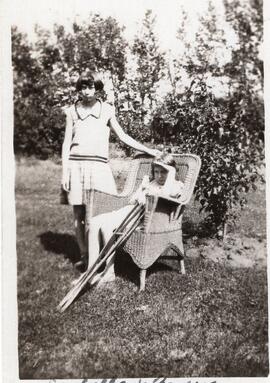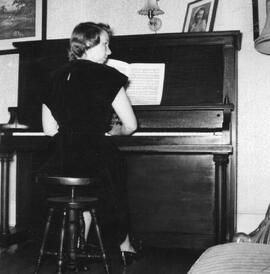- A-2272
- Item
- [197-?]
A man at work in front of the betatron control panels.
Bio/Historical Note: In May 1948 Dr. Harold E. Johns, Dr. Newman Haslam and Dr. Leon Katz, professors of Physics at the University of Saskatchewan, travelled to Milwaukee to inspect the betatron that had been built for the U of S. In August of that same year, the U of S installed in the Physics Annex the first betatron in Canada—the world’s first betatron used for a cancer treatment program. Dr. Johns then began the design and construction of one of the first cobalt-60 teletherapy units. Dr. Johns and his graduate students became the first researchers in the world to successfully treat a cancer patient using cobalt-60 radiation therapy. It was also used for research programs in nuclear physics, radiation chemistry, cancer therapy and radiation biology. In 1951 the world’s first calibrated Cobalt-60 cancer therapy unit was installed at University Hospital (G Wing). The calibration work was done by Dr. Sylvia Fedoruk through rigorous depth dose measurements. In early 1952, Maclean's magazine had dubbed the cobalt-source radiotherapy machine the cobalt bomb - a tongue-in-cheek tribute to this peaceful use of nuclear technology. Dr. Johns’ pioneering work in cobalt-60 teletherapy became the gold standard for radiation therapy for many years and thousands of units were installed worldwide. The original treatment device was used in Saskatchewan until 1972. The work Dr. Johns and his team did on the physics of high energy photon beams was fundamental, and still forms the basis of most treatment planning systems in use today (2024).

